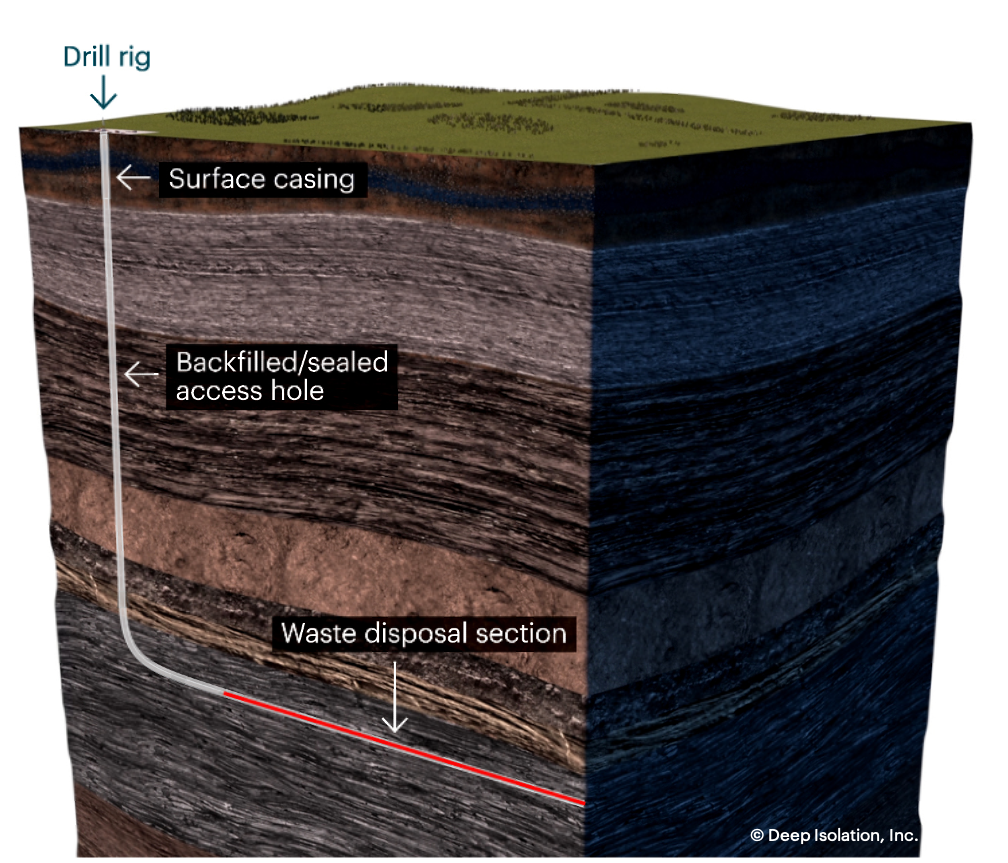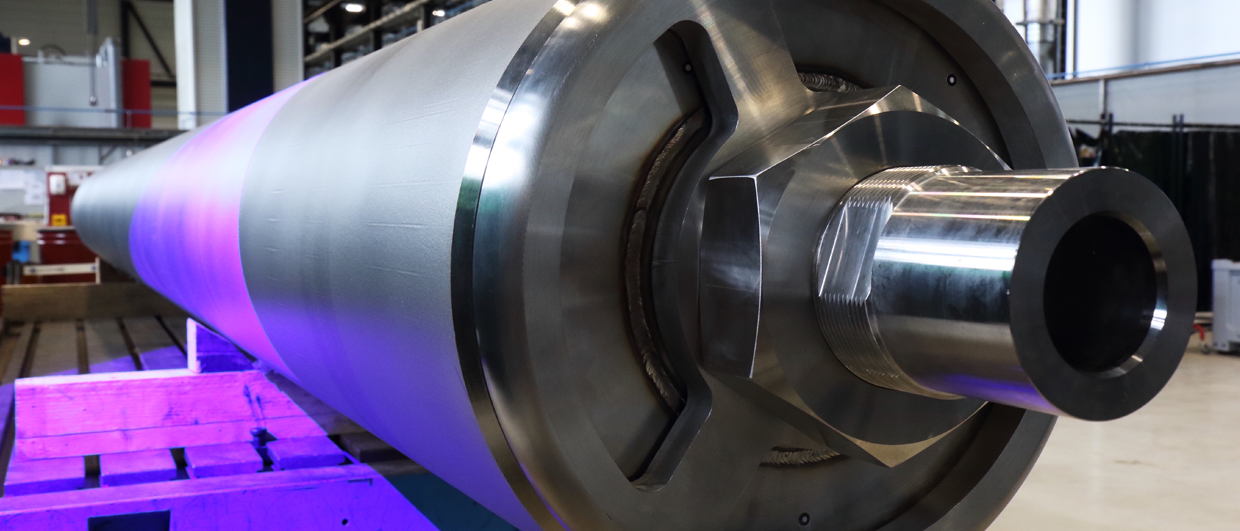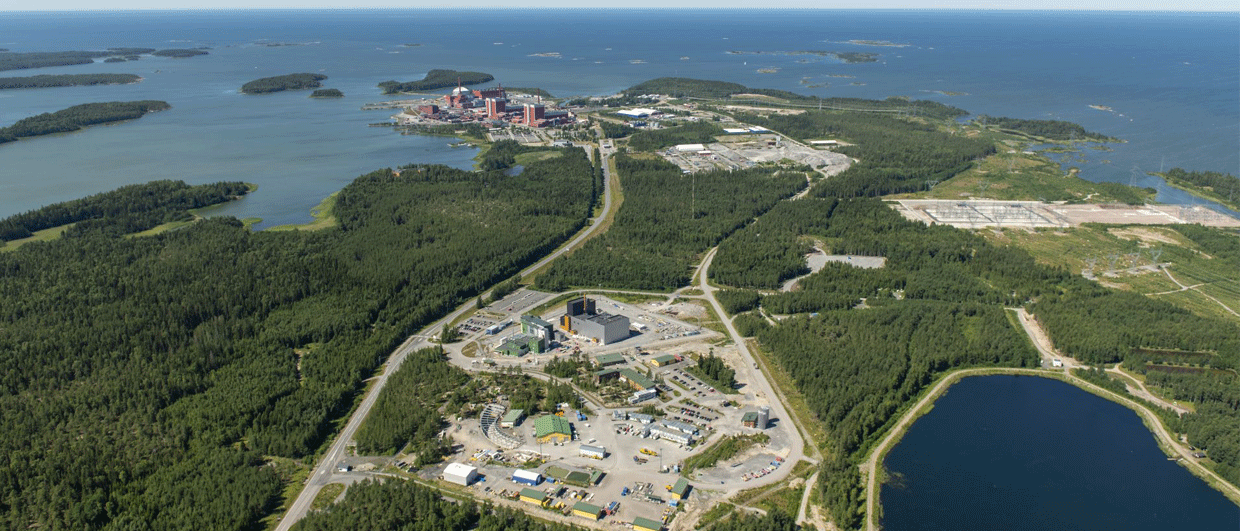“We get that question a lot,” says Rod Baltzer, CEO of Deep Isolation, when he calls in from Dallas. “But no, oil and gas wells cannot be easily converted to store spent radioactive waste.”
“The reason is simple,” he continues, “the canisters we developed in which we store the waste are about 15 inches wide. That’s about three to five times the diameter of most oil and gas wells near terminal depth.”
The idea of storing radioactive waste in boreholes sounds quite simple and elegant, using the space at the toe of drilled wells. “This way, we can go much deeper than any ‘conventional’ subsurface storage facility will ever be able to achieve,” says Rod.
This way, we can go much deeper than any ‘conventional’ subsurface storage facility will ever be able to achieve
“As we saw the advances made in horizontal drilling in the oil and gas sector, we thought why not use this technology for rad waste as well? Previously, plans had always centred around drilling deep vertical boreholes into granite, but the ability to drill long horizontals in shale formations opened up the opportunity to apply that technology in our domain,” he explains.

The timing is right. So far, permanent subsurface storage of nuclear waste, despite a few attempts, has never been successful. Finland is getting close, with their newly built facility ready and available for receiving the first batches next year, but that’s about it. And that in a time when nuclear is on the table again as a reliable and low-carbon energy source.
And there are other advantages too: “The cost of drilling twenty wells with a 1 km horizontal section in which the canisters will be stored – enough to accommodate the waste one nuclear power station produces in about 60 years – can be up to 70 % less than building a full-scale underground storage facility.”
It is the combination of costs and safe storage that formed the reason for Deep Isolation to test the concept better. “We will soon start a full-scale test of our technology at a test site near Cameron, Texas,” continues Rod. “That means we will drill a borehole to a target depth of about 1,500 m with a diameter downhole of 21 inches. That should be sufficient to get the 15 inch canisters in. It is crucial in the well design to prevent sudden changes in inclination, otherwise the canisters may get stuck whilst lowering them into the hole.”
“We have already tested this during two previous tests at intermediate depths,” says Rod, “to great hilarity from the drillers. Successfully lowering a canister into a borehole and getting it back up again did not sound like rocket science to these guys at all, but it was an exciting step in the radwaste disposal community at the same time. It shows how different perceptions are in individual communities when it comes to how “cutting-edge” new technology is.”





